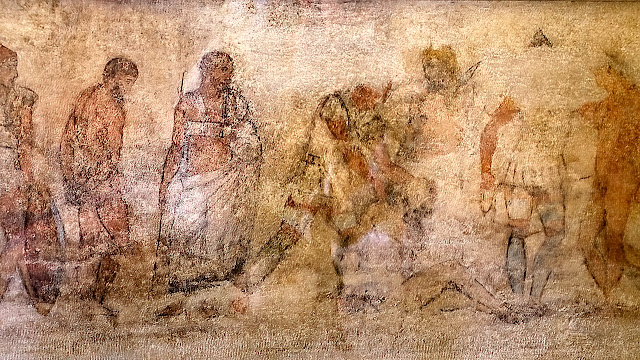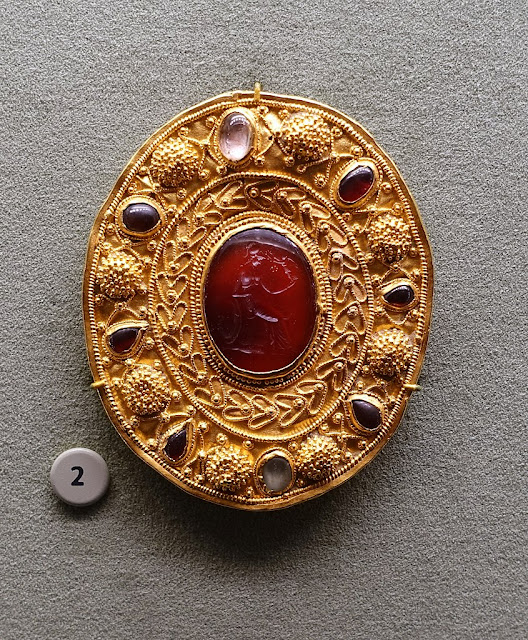"Excess generally causes reaction, and produces a change in the opposite direction, whether it be in the seasons, or in individuals, or in governments." - Plato
In the case of drinking to excess, this change could result in the loss of virtue and well-being or, as the Greek philosophers termed it, Eudaimonia. Plato believed that individuals naturally feel unhappiness when they do something they know and acknowledge to be wrong.
Plato's student, Aristotle, agreed that although the pursuit of virtue, excellence, and the best within us was necessary to achieve eudaimonia, virtue in itself was not sufficient alone.
"Aristotle believes that happiness and well-being come from how we live our lives," explains psychologist Catherine Moore, "And that's not in pursuit of material wealth, power, or honor."
Aristotle expounds upon ways to achieve the happy life in his work "Nichomacean Ethics."
"To be honest, a lot of Nichomacean Ethics is about what happiness isn’t," Moore points out, "Satisfying appetites is akin to a “life suitable to beasts." The pursuit of political power, material wealth, even fun and leisure, he (Aristotle) saw as “laughable things”, inferior to “serious things."
"Instead, happiness is an ‘intermediate’, or a ‘golden mean’ between deficiency and excess. One example of virtue as a mean between two extremes is courage – as a virtue, it’s halfway between recklessness and cowardice."
“He is happy who lives in accordance with complete virtue and is sufficiently equipped with external goods, not for some chance period but throughout a complete life.” – Aristotle, Nichomacean Ethics, Book I, Chapter 10
So, although Aristotle acknowledged fate or luck does play a role in happiness, he believed an individual's disposition and talent could still be used to achieve it.
Which virtues does Plato value? In his work "Republic" Plato describes a discussion among friends as to what a just republic would look like and four virtues are revealed:
Temperance (moderation) – or self-regulation, to avoid the vices and corruption caused by excess.
Courage (or fortitude) – to stand up for what we believe is right and good.
Justice – a social consciousness that plays a key part in maintaining societal order, and
Wisdom (practical wisdom, or prudence) – the pursuit of knowledge.
Again we see a reference to excess. These ideas were being exchanged at symposia of the 4th century BCE both in Greece and in the Greek colony of Magna Graecia in southern Italy. Plato, in his work "Gorgias", written about 380 BCE describes Magna Graecia as a place where discussion of the human soul abounded amid religious and philosophic speculation. Its proximity to and trade relations with Etruria would have also been a strong influence on Etruscan potters and may have served to inspire moralistic themes in art of the period. One possible example is a red-figured terracotta rhyton found in a tomb at Tarquinia.
"This unusual 4th century BCE vessel is composed of two mold-made faces set back to back: the upper one a bearded Greek warrior with curly hair and wearing a Corinthian helmet pushed up on top of his head, the lower one a caricature of a bearded man, perhaps a Syrian or Phoenician, with a broad nose, almond eyes, and thick, smiling lips." - Museum of Fine Arts, Boston.
As is characteristic of many Janiform representations, it may portray two contrasting aspects of a single individual - the friendly face of the Greek warrior rendered realistically that is transformed into a caricature of a belligerent barbarian once the guest overindulges - a subtle caution about the corruption of excess. I think the fact that the barbarian visage is rendered as a caricature points to the artist's metaphorical intent.
Read more about Eudaimonic Well-Being here:
https://positivepsychology.com/eudaimonia/
Images: Etruscan rhyton attributed to the Bruschi Group, Late 4th century BCE - Late Classical or Early Hellenistic Period, now in the collections of the Museum of Fine Arts Boston, images courtesy of the museum.
 |
| Images: Etruscan rhyton attributed to the Bruschi Group, Late 4th century BCE - Late Classical or Early Hellenistic Period, now in the collections of the Museum of Fine Arts Boston, images courtesy of the museum. |
If you enjoyed this post, never miss out on future posts by following me by email!





















































